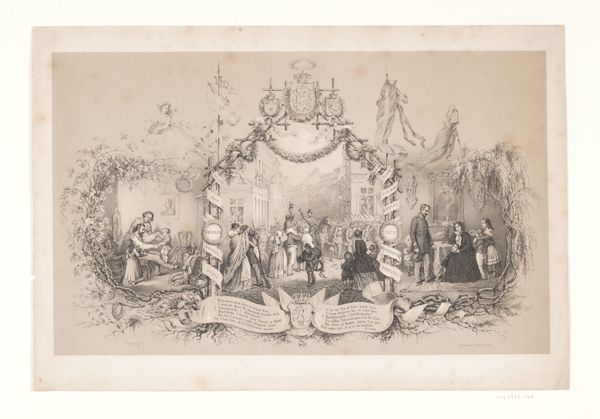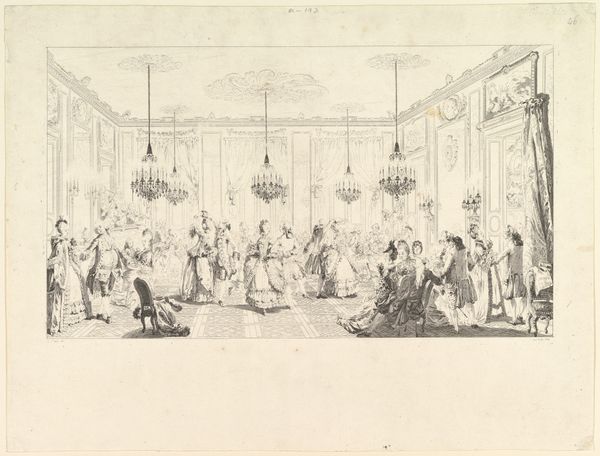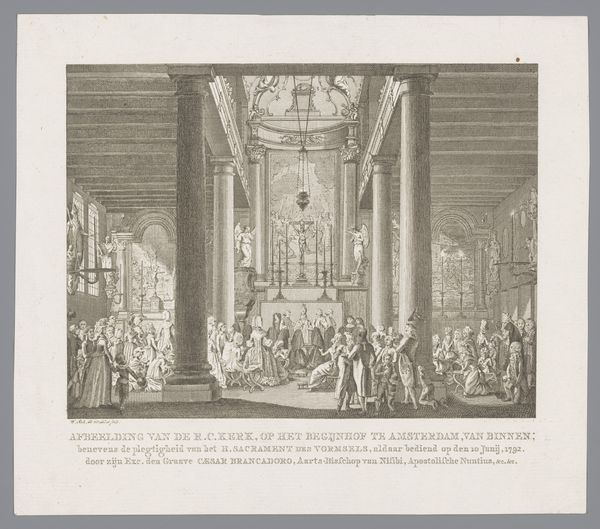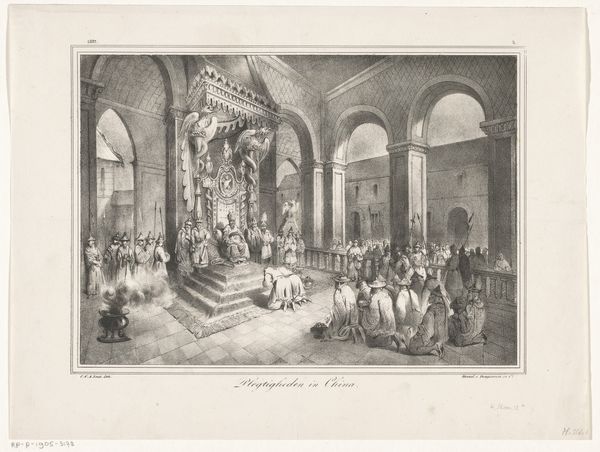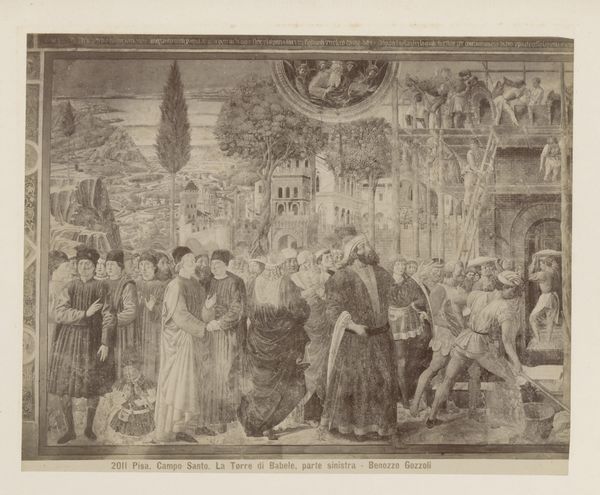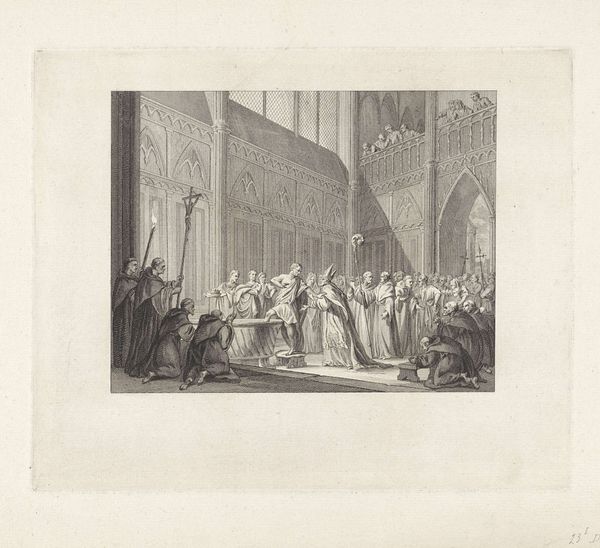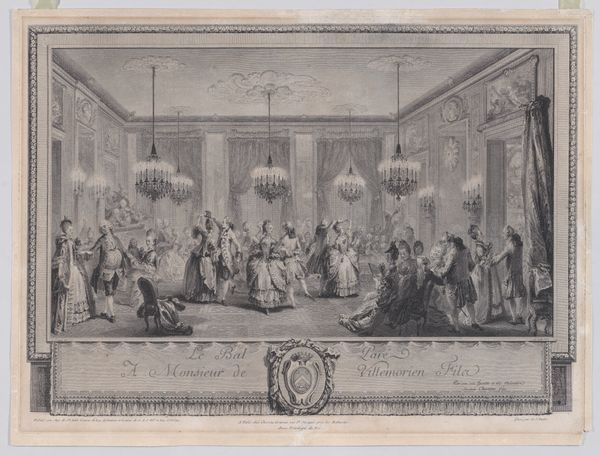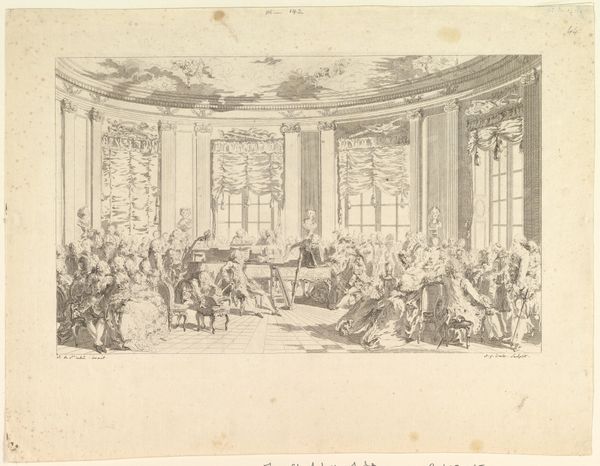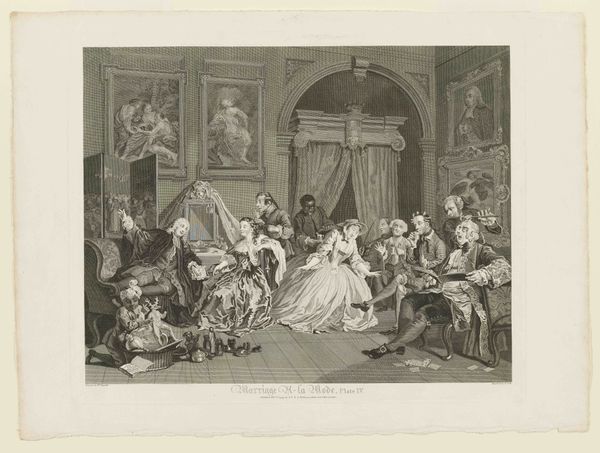
drawing, print, etching, paper
#
drawing
#
baroque
# print
#
etching
#
paper
#
cityscape
#
genre-painting
Dimensions: 494 × 641 mm (image); 538 × 670 mm (sheet); platemark not visible
Copyright: Public Domain
Curator: This etching is titled "The Pleasures of the Ball," created around 1730 by Gérard Scotin II, and you can find it here at the Art Institute of Chicago. It depicts quite the bustling scene. Editor: My first thought? Oh, the drama! It’s like a meticulously staged garden party gone slightly awry. There's a definite sense of imbalance, as if at any moment the whole scene could topple over. Curator: That’s a keen observation. Etchings like this provide a valuable snapshot into the social life of the 18th century. These garden parties were spaces where social hierarchies were both performed and challenged. Editor: Exactly! I can almost hear the whispers and rustling silks. It’s interesting how Scotin focuses on a sort of "society in action," full of movement—from flirting couples to someone clearly having had one too many glasses of wine and has fainted near the Fountain of Truth. There’s even a little dog running amok. Curator: These prints circulated widely and helped spread certain images and ideas about the aristocracy and their pastimes. Think of it as a form of early social media, carefully constructing a certain narrative. This work fits nicely in the Baroque style because of the great detailing. Editor: So, what story do you think Scotin is trying to tell us? Is he glorifying these lavish parties, or is there a hint of critique, a subtle nod to the absurdities of the elite? Curator: It’s probably both. Remember, artists often navigated a complex path, balancing patronage and personal expression. By including these little details like the inebriated guest, he gives us something to think about. Scotin’s actually offering viewers insight into that era's societal structures and perhaps also a glimpse into the complexities of human nature, too. Editor: Right. Ultimately, maybe "The Pleasures of the Ball" reflects the fleeting nature of joy, beauty, or at least the questionable merits of 18th-century social gatherings! It has that air of bittersweet celebration and perhaps even a slight sense of impending doom. Curator: It is a really vibrant lens into a world that maybe we idealize, but in truth was filled with imperfections and really rich interpersonal stories.
Comments
No comments
Be the first to comment and join the conversation on the ultimate creative platform.

